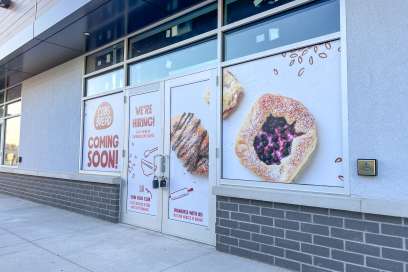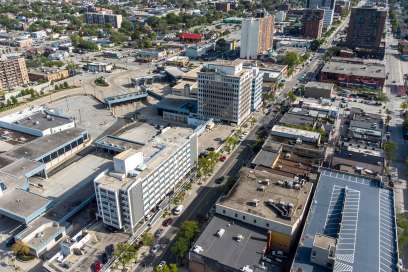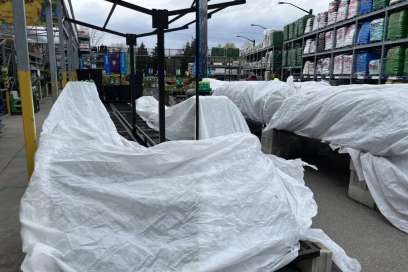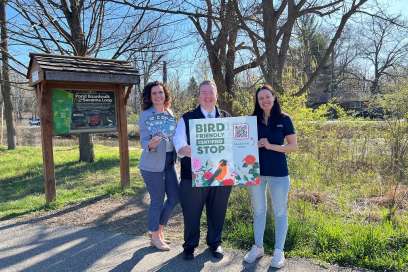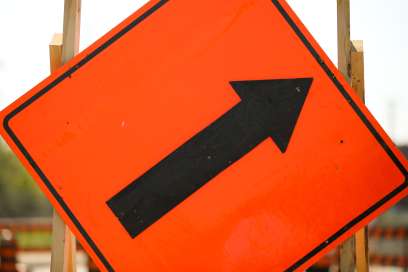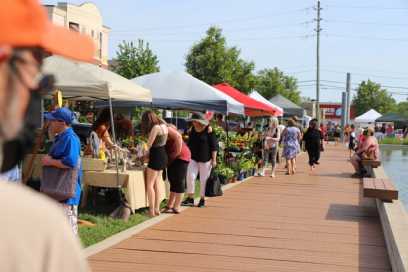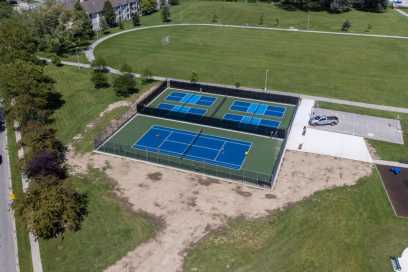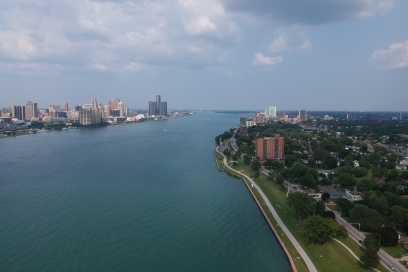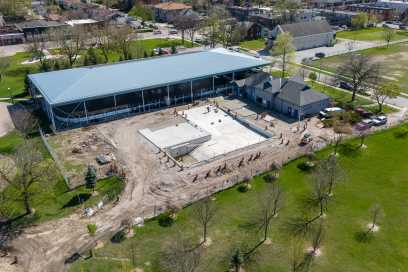Local Innovators Build Micro Wind Turbines To Light Up Developing Villages In Need
Saturday June 6th, 2015, 11:00am
Hello time traveller!!
This article is 3246 days old.
The information listed below is likely outdated and has been preserved for archival purposes.
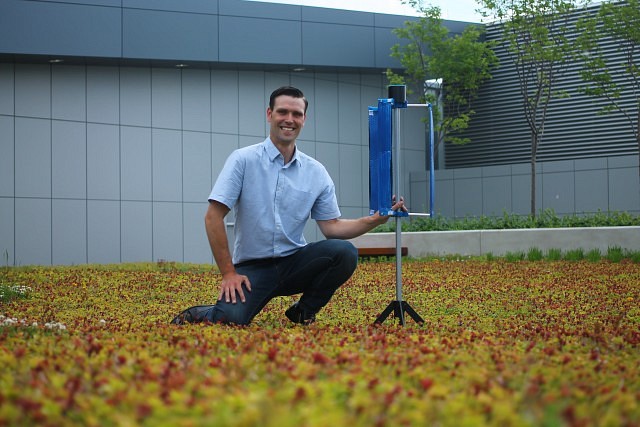
Kyle Bassett displays his micro wind turbine prototype, designed by him and his business partner Lucas Semple. The two are raising funds through a Kickstarter campaign in an effort to make the project available in rural areas.
A team of UWindsor students are asking the public to help them fund their project to bring micro wind turbines to communities like those in Nicaragua where a struggle with rural electrification is at large.
Kyle Bassett and Lucas Semple have designed a micro wind turbine which uses a 3D printer to print out a number of pieces, making an easily assembled wind turbine, a fraction of the size of the wind turbines Windsorites are familiar with seeing in the county.
Inside the wind turbine there is a generator mounted to the shaft and as this assembly spins, it spins the generator. The generator then passes the energy down a cable through the tower and at the bottom of the tower there is a charge controller circuit, which converts the AC electricity from the alternator into DC electricity for a battery charging a small battery pack. The battery pack then disconnects from the turbine and there is a USB port within it where you can plug in things like a phone charger, camera batteries and so much more.
“This technology will change the way rural electrification is carried out in a lot of parts of the world,” said Bassett. “The idea that these machines can be made on site with a 3D printer, it’s a very unique approach to distribution.”
Bassett explained for technology such as solar panels or very large wind turbines, the cost of deploying the technology to remote communities in need is often times greater than the value of the actual equipment because the areas are so remote and hard to reach. Being able to use a 3D printer on site cuts the deployment costs.
“Our first goal is to go and bring a 3D printer to a remote village in Nicaragua and produce 50 turbines in the area,” said Bassett. “We’re going to be setting up 12 of these wind turbines along the side of this volcanic strata and powering the 3D printer with the wind energy. While the printer is operating, it’s making more wind turbines. It’s kind of an interesting loop, the way you can take the energy and convert it now into another machine that makes energy. With this model you can rapidly install up to 100 turbines in a matter of weeks.”
Bassett is currently completing his PhD in Civil Engineering. He has already completed both a Masters as well as an undergraduate degree in Mechanical Engineering and is only 28-years-old. Bassett met his business partner Semple during school and the two traveled to Nicaragua in 2010 where the idea for the project was born.
“I started doing turbine research in 2008 and 2009, getting involved doing turbine testing and turbine research,” said Bassett. “In 2010 when I finished my Masters degree I kind of wanted to do some traveling, I wanted to see different things around the world but I also wanted to start to see the problem with rural electrification. As an engineer it really helps to understand by seeing the way something is happening, the way things unfold. That became kind of important to me to be able to actually see what it’s like in other parts of the world where this technology can help.”
During the trip to Nicaragua in 2010, Bassett was able to test out some of the main components of his turbine design, which included the unique sail blade wing designs. Bassett explained the design idea came from a sailboat and how, even though it is traveling into the wind, it somehow is able to generate and move faster than the wind itself integrating a lift force. He and his partner took that design and engineered it to work for their wind turbine, which began as a 15 by 20 foot piece of machinery on a beach in Nicaragua. The turbine attracted a lot of attention from locals and tourists who came to the team to see what they were doing. Bassett said they explained they were offering electricity where people could charge their cell phones and flashlights.
As the locals were utilizing the turbine, it became clear to the team what they were looking for wasn’t this large infrastructure to power towns and villages but rather a small portable and personal turbine they could use to power smaller objects.
The turbine today is what’s known as a vertical axis wind turbine, which spins like a carousel as opposed to a propeller in classic wind turbines. Bassett explained while on a larger scale there are a number of disadvantages to the design, as the project is compacted and scaled down, the design becomes much more efficient to not only be portable but also to perform in a variety of environments.
Initially the design became rather complex and difficult to install, which is where the 3D printer came into the picture. While learning about 3D printing being utilized for window parts, Bassett starting imagining the ways he could use 3D printer plastic parts instead of machined parts, which could take hours to machine. Now he has printed parts in minutes.
“That really opened my mind for design shapes,” said Bassett. “I can now design shapes that were beyond my ability to fabricate whereas in Nicaragua where you’re building things by hand. I was limited in a way to how good of a fabricator I was. There were some fantastic carpenters in the village that helped us in a lot of ways, I was limited by that though. And so by using 3D printing it’s changed the world in terms of this.”
Being just a week into the Kickstarter campaign, the team has already surpassed their halfway mark on the way to raising $40,000.
Their ambitious project was even chosen as a Staff Pick on Kickstarter — an honour bestowed on projects that stick out as particularly compelling, whether it’s a really fun video, creative and well-priced rewards, a great story, or an exciting idea, according to Kickstarter.
The plan is to go to Nicaragua in January to implement the first portion of their project. After they’ve developed their turbines in location in Nicaragua, the team are hoping to attract the attention of both government and non-governmental organizations to see the benefits of their project and how it can help them in their current efforts.
“That’s really the goal is to get to the government and NGO’s and other charity organizations that do this already and present them with a new approach that could be perhaps more efficient and much more cost effective,” said Bassett. “Governments are investing hundreds of millions of dollars around the world for rural electrification so we just wanted to be able to provide that industry with a new approach, something that’s very unique, very different, with incredible potential for impact.”
Bassett said they’ve gotten to the point where the team is confident in the turbine’s ability to perform, but there are always ways to improve the design, which is why they are taking all the comments made on their Kickstarter campaign into consideration. While the main goal is to get the turbine into rural areas, it is also practical for use in North America with some variations in design.
Eventually the design will be completely compact-able with folding struts, which will be able to fold out like an umbrella.
To help the team fund their goal, visit their Kickstarter page.





